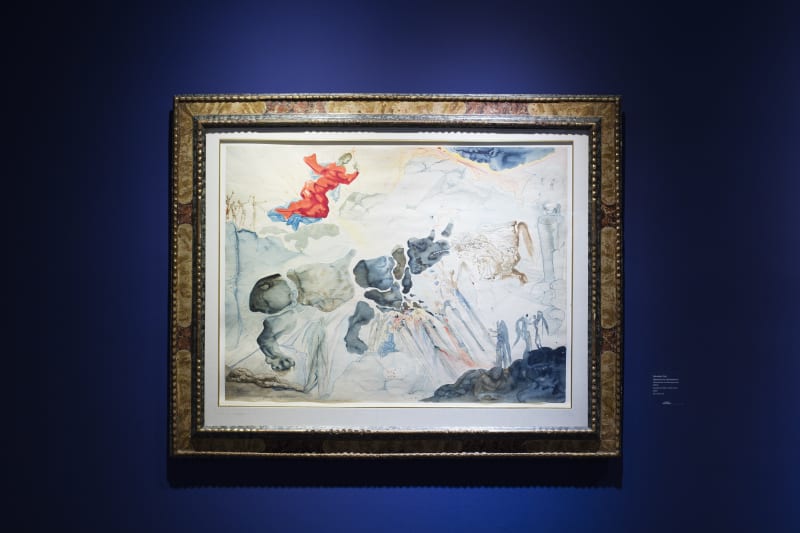SALVADOR DALÍ: THE ATTITUDES OF THE DREAM
A text by Montse Aguer, Museus Dalí director
We must bear in mind that Dalí, we can say quite categorically, is the most popular of the surrealist painters and that he has managed to transmit to us, primarily via the landscape, images proceeding from the subconscious, occasionally quite conscious, mind. What I would emphasize about Dalí, apart from the paranoiac-critical method, is the idea of an almost handmade photographically realistic landscape in which enigmatic features appear. [...] Dalí wishes, like the surrealists, to provoke us and he wants us to be capable of seeing reality in another way or in other ways. He also wants us to realize how to see, to go much further than a first impression or vision.
[…] In 1929 he makes a major contribution to the oneiric world, to the world of the dream: the paranoia-critical method for interpreting the world: “I cease to be inspire by the gaze of the scientific documentary and switch to the interpretative gaze of the paranoiac. […] Reality is just like each of us interprets it, the reality and the projection that each of us makes of this reality, hence the vision of the paranoiac, which is a highly complex multiple vision, offers us different ways of reading this reality. And never is it what we see at first glance, instead we have go much further and investigate all the interpretations reality provides us with, because the external world, in this case the landscape, merely serves as an illustration for our thoughts, for our unconscious”. Appearing in Dalí is the idea of a double image, which he also defines as a paranoiac image or an invisible image: “I’m interested in everything to do with this interpretation of reality, I’m interested in the triumph of obsessive ideas because in actual fact I’m interested in immortality”.
[…] As well as the reflexive, analytical Dalí, there is a Dalí who wishes to be understood by the general public, to relate to mass culture. In that respect he speaks in his American period of the possibility of dreams in colour. Likewise, he writes a series of articles for the magazine Nugget, in which he speaks of creating a dream machine: “All will have the opportunity to reap the benefits of a complex machine for dreaming; in them the subject will be surprised by other than mundane and customary sensations. Surrealist dreams will stream uncontrollably through the mind. Six minutes a day in a dream machine and fantasy will slowly emerge within your soul.” He does this ironically, but at the same time he refers to a machine for dreams which alludes to the machine concept that appears throughout the history of art.
“The Conquest of the Irrational, is a basic text for understanding Dalí’s paranoia-critical methos: “My whole ambition in the pictorial domains is to materialize the images of concrete irrationality whit the most imperialist fury of precision.” The idea of handmade photography appears. And he goes on to explain: “Instantaneous and hand-done colour photography of […] images of concrete irrationality: images which provisionally are neither explicable nor reducible by systems of logical intuition or by the rational mechanisms.”
This is my idea of Dalí and the dream, of surreal Dalí, of a Dalí who invites us to stop giving a form to his dreams and to stop interpreting them, because interpreting them is also to give them a form.
Montse Aguer
September 12, 2017





